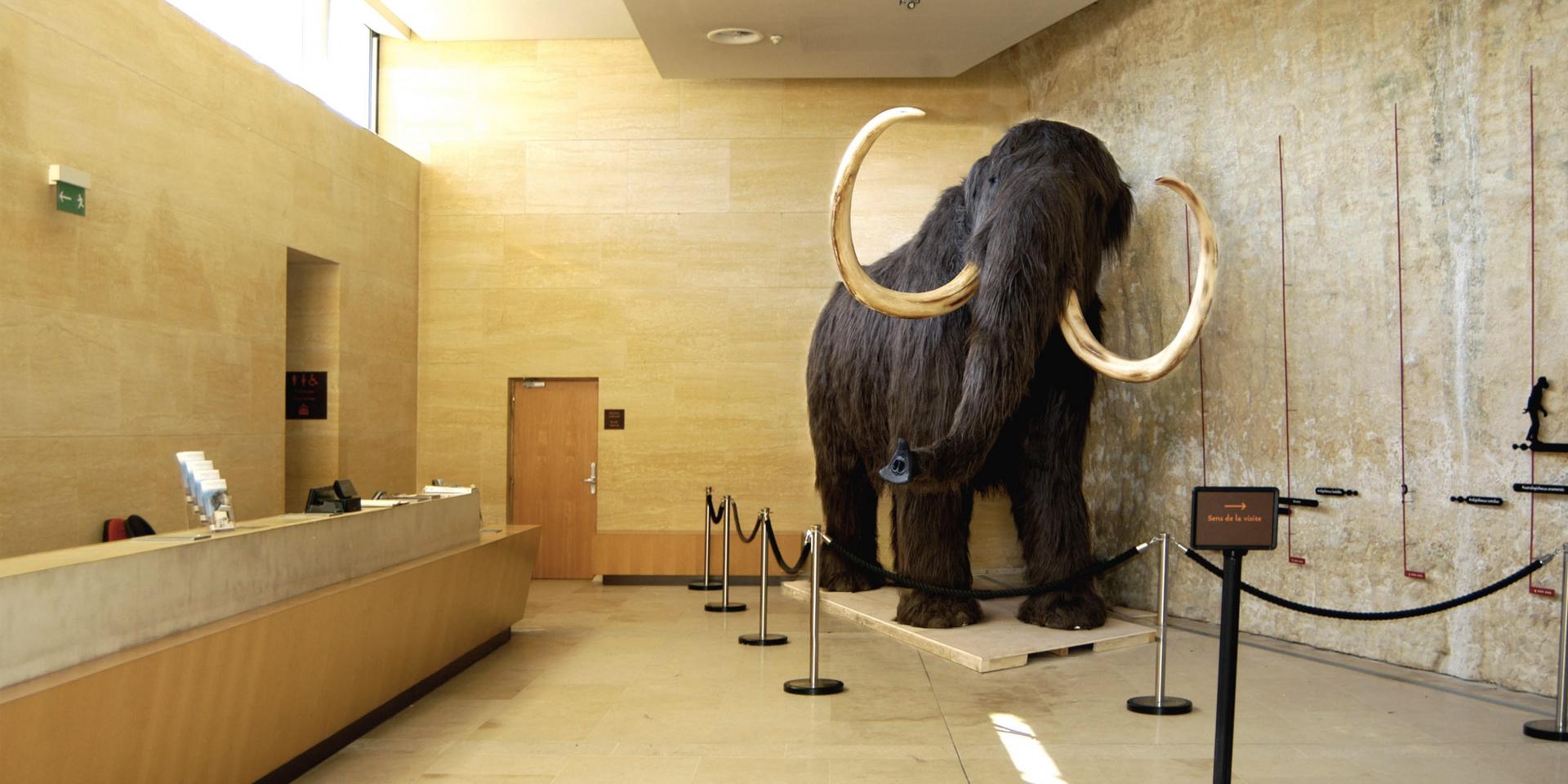
Les espaces
The Staircase: The Well of Time
After the access tunnel, the staircase brings visitors face to face with the thickness of time.
Several vertical notches cut into the cliff hold casts of stratigraphic cross-sections: as visitors climb up the steps they discover seven sequences that cover the whole Palaeolithic period, thus showcasing an “ideal” stratigraphy.
Like the pages of a book, each sequence has preserved the trace of climate phenomenon and human occupation. As visitors makes their way along, starting from the oldest layers located at the base of the stairwell (a cross-section from the Vaufrey cave) all the way to the most recent located at the top (a cross-section from Laugerie-Basse), they see that a nearly continuous record of time is present in Perigord, a sequence in which the impact of human activities is more and more visible (a richness of tool relics, ashes, coal…).
Casts of stratigraphic cross-sections presented on the staircase:
Dmanisi, Georgia
About 1.8 million years ago
Vaufrey, Cénac-Saint-Julien (Dordogne)
Between 470,000 and 70,000 years ago
La Micoque, Les Eyzies-de-Tayac-Sireuil (Dordogne)
Median sequence: between 330,000 and 240,000 years ago
Le Moustier (lower shelter), Peyzac-le-Moustier (Dordogne)
Upper sequence: between 56,000 and 35,000 years ago
La Ferrassie, Savignac-de-Miremont (Dordogne)
Median and upper sequence: from 28,000 to 26,000 B.P.
Laugerie-Haute Ouest, Les Eyzies-de-Tayac-Sireuil (Dordogne)
From 22,000 to 15,000 B.P.
Les Jamblancs, Bourniquel (Dordogne)
Lower sequence: from 19,000 to 17,000 B.P.
Laugerie-Basse, Les Eyzies-de-Tayac-Sireuil (Dordogne)
Upper sequence: around 14,000 B.P.
